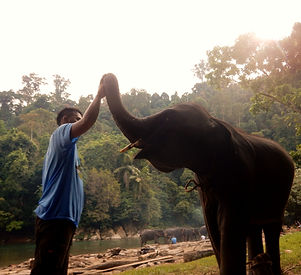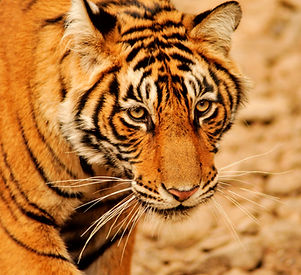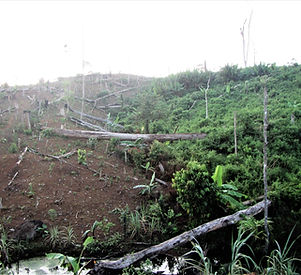ARDIANTIONO

ABOUT
I am a conservation scientist interested in using science to inform effective wildlife conservation. My research focuses on: 1) improving biodiversity monitoring, 2) promoting human–wildlife coexistence, and 3) strengthening evidence-based conservation.
I completed my Ph.D. at the University of Kent’s Tropical Defaunation Hub, optimizing monitoring approaches and conservation prioritization for mammals in Sumatran tropical forests. Previously, I worked with the Wildlife Conservation Society–Indonesia Program and Sumatran Orangutan Society on species and habitat monitoring and evidence-based conservation management.
I am currently a postdoctoral researcher at the Sound Forest Lab, University of Wisconsin–Madison, assessing the biodiversity co-benefits of Nature–Climate Solutions that primarily focus on carbon storage. I am developing a practical data integration framework that combines camera traps, acoustic monitoring, and eDNA to better inform overall biodiversity.
In addition, I serve as President of the Society for Conservation Biology–Indonesia Chapter and as an Associate Editor for the Journal of Applied Ecology.
RESEARCH PROJECTS
Integrating multiple datasets to inform species population and biodiversity status
Species population status is often derived from a single data source, which has limitations in spatial and temporal scales. Using Sumatran tiger study case, we combine multiple data sources to inform precise estimates of landscape-wide tiger occupancy. We extended our data integration framework to identify the most cost-effective approach to monitor threatened species .

Understanding people's attitudes and behaviours toward wildlife
To achieve human-wildlife coexistence we need to understand how people perceive and act toward wildlife. We conducted multiple studies on this topic from understanding intention and willingness to coexist with Komodo dragons and Sumatran elephants, to evaluating how online media reports tiger and crocodile conflict incidents.
Socio-ecological system to inform conservation prioritization
Effective conservation requires input from ecological and social data. For example, protecting threatened species cannot be achieved without support from communities living alongside them. We applied the socio-ecological framework to identify human-crocodile conflict hotspots in Indonesia and to inform Sumatran tiger conservation spatial prioritization under different future scenarios.



Predicting deforestation in tropical landscapes
Deforestation and forest fragmentations remain key drivers of biodiversity loss. We developed a fine-scale (30 m resolution) deforestation model that accounts for ecological, landscape, and social characteristics often associated with deforestation.
We tested this model to predict deforestation risk areas across endemic orangutan habitat endemic in Sumatra, Indonesia.
Skills and Expertise
Ecological modeling
-
Data integration, combining multiple data sources to inform biodiversity and occupancy status (Bayesian)
-
Deforestation modeling
-
Spatially explicit capture-recapture
-
Species distribution model (Maxent)
-
Biodiversity index (species richness, functional, and phylogenetic diversity)
-
Bioacoustic analysis
Social science
-
Multidimensional poverty index
-
Theory of planned behaviour (attitudes, norms, behavioural control, and intention to live with wildlife)
-
Wildlife tolerance model
-
Media content analysis
-
Social survey design
Conservation-related skills
-
Facilitating species conservation planning/multistakeholders meeting
-
Impact evaluation (counterfactual analysis)
-
Spatial monitoring and reporting tool (SMART)
Featured publications
Ardiantiono, N.J. Deere, D.J.I. Seaman, U.M. Rahmat, E. Ramadiyanta, M.I. Lubis, A. Trihangga, A. Yasin, G. Alza, D.P. Sari, M. Daud, R. Abdullah, R. Mutia, D. Melvern, Tarmizi, J. Supriatna, M.J. Struebig. 2025. Improved cost-effectiveness of species monitoring programs through data integration. Current Biology. [LINK]
Ardiantiono, N.J. Deere, E. Ramadiyanta, M.C. Sibarani, N. Andayani, A.N. Hadi, Y. Ginting, J.W. Bull, M.J. Struebig. Selecting umbrella species as mammal biodiversity indicators in tropical forest. Biological Conservation. [LINK].
Ardiantiono, I.M.R. Pinondang, D.S. Chandradewi, G. Semiadi, F. Pattiselanno, J. Supriatna, J.S. Tasirin, N.L. Winarni, M. Voigt, J.W. Bull, T. Humle, N.J. Deere, & M.J. Struebig. 2024. Insights from 20 years of mammal population research in Indonesia. Oryx. [LINK].



